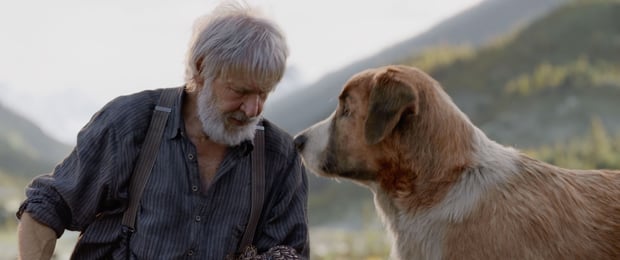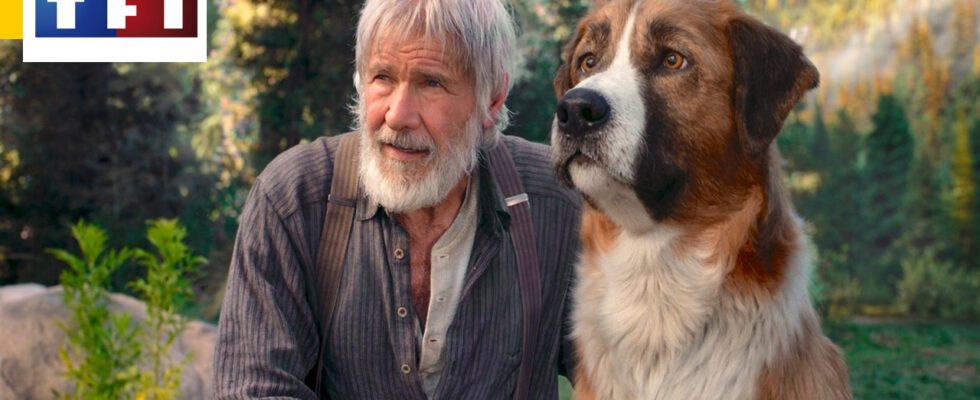Broadcast tonight on TF1, “The Call of the Forest” mixes real shots and computer graphics. If the film is carried by Harrison Ford and Omar Sy, its real hero is the dog Buck. A guaranteed 100% digital animal. Why ?
The story of Buck, a dog with a big heart, whose peaceful domestic life is turned upside down when he is suddenly torn from his California home and finds himself enlisted as a sled dog in the wilds of the Yukon in Alaska, during the rush. gold, in the 1890s. Buck will have to adapt and struggle to survive, until finally living the adventure of his life and finding his true place in the world by becoming his own master…
Written by Jack London and published in 1903, adapted many times on small and big screen, The Call of the Wild is an absolute classic of US literature. A call which is also, logically, that of wide open spaces and wild nature.
In the version directed by Chris Sanders, to whom we owe the animated films Lilo & Stitch, Dragons and The Croods, and who signs here his first feature in Live Action, it is above all the call of the sets shootings with reconstructed sets and the green background used by the CGI: the animals in the film, in particular the dog Buck, are not real.
Something to delight the animal defense association PETA, a long-time activist for the outright cessation of the use of real animals in films, and by their replacement with computer-generated images. Are the real animals, like Croc-Blanc, Rintintin and other Saint-Bernard Beethoven, now relegated to the radius of dusty memories? Not quite anyway: the film Togo, produced by Disney and broadcast on its platform in 2020, uses real dogs.
If the production of the film made the choice to create the dog Buck, who is the true hero of the film, entirely in computer-generated image, it is not in a desire to follow the agenda of the association. London’s adventure novel has many violent scenes, especially with regard to dogs. The studio has found a way to tone down the violence and the scares in order to deliver a family-first film. The use of CGI was therefore thought out prior to the development of the film.
To bring it to life, Chris Sanders hired visual effects producer Ryan Stafford and three-time Oscar-nominated visual effects supervisor Erik Nash. Instead of using a simple marker – usually a tennis ball – and adding the dog digitally, Ryan Stafford suggested hiring an actor, filming it, and then replacing it with animation.
He then contacted Terry Notary, who began his career as a Cirque du Soleil performer and went on to become one of the foremost specialists in body language and motion choreography in film. He notably worked on the new Planet of the Apes trilogy and played Oleg in the film The Square, Palme d’or at the Cannes Film Festival in 2017. The latter spent hours studying dogs and learning their behaviors and habits. movements.
Twentieth Century Fox
However, this idea did not immediately convince producer Erwin Stoff, who remembers: “It was a strange idea to have a man play a dog. I didn’t know how the actors would react, because they were asked to play opposite an adult on all fours, dressed in a weird gray outfit with fake front paws, which pretended to be a dog… But it turned out to be a stroke of genius because Terry Notary delivered a canine portrait so inhabited that it enhanced the performance of all the actors!”
Ryan Stafford explains: “It gives actors something to measure themselves against. I’ve done a lot of motion capture movies and you get much higher quality acting performances when they’re playing opposite someone.
From the moment you take their partner away from them and they find themselves face to face with a tennis ball, it affects their game enormously.
In the book, Buck is described as a cross between a “gigantic St. Bernard” and a “purebred Scottish Collie”. The film crew gave him the Bernese Mountain Dog coloring as they thought the colors would read well on screen. There was even a real Bernese mountain dog on set every day as a lighting reference. But over time, they realized that it was difficult to read the Bernese Mountain Dog’s expressions, and that its dark fur did not stand out well in night scenes.

Twentieth Century Fox
It was while consulting an adoption site that the wife of Chris Sanders came across a dog that was a cross between a Saint Bernard and a shepherd. She immediately went to the shelter to adopt him and brought him to the set where he was scanned. The other eight dogs in the sled dog team were also scanned from real dogs.
